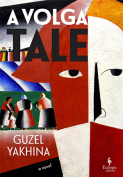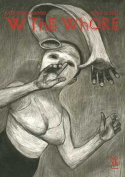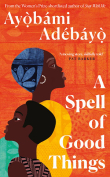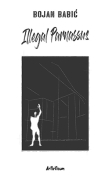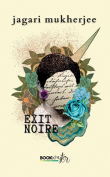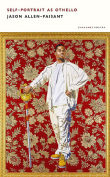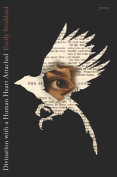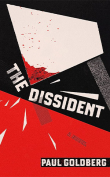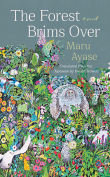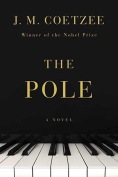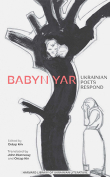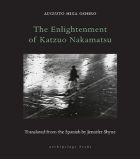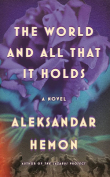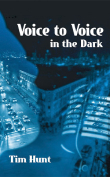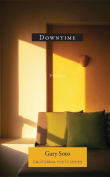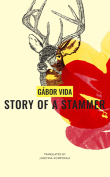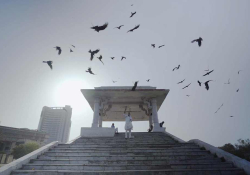The Light at the End of the World by Siddhartha Deb
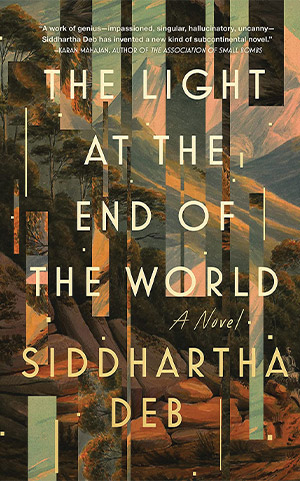 New York. Soho Press. 2023. 458 pages.
New York. Soho Press. 2023. 458 pages.
In one of my favorite moments in Siddhartha Deb’s ambitious, multiple-strand, cross-genre epic The Light at the End of the World, a man stands before an oracular bull and tries to get it to give him counsel. “Was I running in the wrong direction?” he asks. “Had I been running in the wrong direction all my life?” Unmoved by his show of distress, the bull lopes off before transforming into an upright-walking creature.
The characters in Deb’s book are all people impelled and wounded by faith of some kind. They had all believed in something: a better world, a kinder world, a world that honored their convictions, upheld their greatness. They were all disillusioned.
The first (and last) chapters of the book belong to Bibi, an ex-journalist with “lefty credentials,” now working as a copyeditor at a global consulting firm in a dystopian Delhi. Bibi is an odd, paradoxical figure, given to bouts of torpor and restiveness. On the surface, she seems to have turned her back on the world, malingering without compunction, abnegating all manners of duty and imperative. Whenever she can, Bibi sleeps. When she is awake, she goes on flâneries around the city, scoping its entrenched, abysmal inequities; at work and at home, she doomscrolls social media, skimming news articles and conspiracy theories. While she walks, her eyes rove. Mangy mutts, protesting farmers, student rallies, slums razed for new construction, people’s fervor for Brahmastra, India’s latest superweapon-in-development: they all warrant her scrutiny. Seeing her rapt before a group of marchers in the street, a security guard tells her, “You understand because you still hope that other worlds are possible.” Bibi isn’t sure she still does. Bibi is Muslim; her parents are from Bangladesh. She is on the “D List, the so-called doubtful category of citizens” and will have to turn to circuitous routes to have her name entered into the national register. Soon Bibi discovers she also has to find Sanjit, an anti-establishment reporter she once worked with.
From there, we jump back in time, to 1984 Bhopal. We follow an assassin contracted to waylay a whistleblower with confidential material on “design flaws, safety features and storage facilities” in an American chemical factory. The man calls himself “the erect Lund [penis] of Bharat [India],” boasts of having Sikh blood on his hands (following Indira Gandhi’s murder by her Sikh bodyguards), and claims to be “ready to fuck every enemy on behalf of the nation.” Before long he finds out he is himself being set up by his patron.
In 1947 Calcutta, where Deb takes us next, Das, a young veterinary student, fwinds himself unmoored, after a mysterious “Committee” he has been involved with for some time has vanished. Das, we learn, had witnessed firsthand the horrors of the Bengal famine. The experience had left him demoralized. Then the “Committee” came to his rescue, offering him access to a “gentler, kinder” history, to knowledge that would bring to life a mythological aircraft capable of compassion. Das was to be the one to fly it.
Deb then gives us a kitschy postcolonial rebellion story of sorts as we leap back to 1859, when a contingent of English soldiers are crossing into the Himalayas in search of a mutineer, after the failed Sepoy Mutiny. Sykes, the most perceptive of them, senses trouble when their colonel rashly decides to lodge up at the castle of a puzzling figure who goes by the even more puzzling name of “White Mughal.” Sykes finds his faith in the Crown wavering. He begins to wonder “about the natives and if they might not have had good cause for their mutiny.” Meanwhile, unbeknownst to them, automaton Sepoys and Tipu’s famed clockwork tiger are getting ready to fight them.
What in the world!, I can hear you say. But then this is perhaps not so outrageous a reaction for a novel that so brazenly refuses domestication, scorning our grand ideas about what a novel should be, blending realism and mythology, human and machine, the ordinary and the strange, bygone worlds and worlds to come—without really fretting about design or believability.
The parts do not add up to a cohesive whole. The overall impression is of juxtaposition. Completed jigsaws laid next to one another with the occasional piece in common. My only real gripe with the book, however, is that it constantly wants to take everything in: history, scenery, politics, rumor, poetry. Deb, I know, will cop to the criticism: he has described the book as a “hungry novel.” It is, and wonderfully so. But surely some of its hungers could have been disregarded, quelled with bite-sized hors d’oeuvres?
The Light at the End of the World is overlong, slow in certain places, challenging, and bewildering but also ultimately rewarding. It is a book that exacts your complete trust. Come with me, it says, let’s time-travel, let’s see what we find. Are all terrors the same everywhere? Is there hope to be had on earth? Is there light?
Yagnishsing Dawoor
Port Louie, Mauritius
